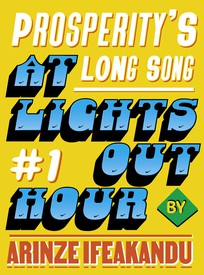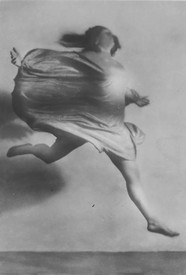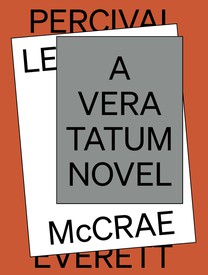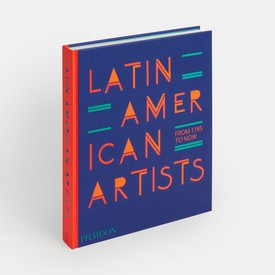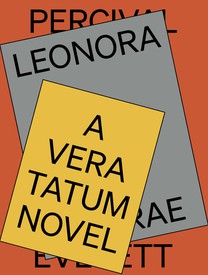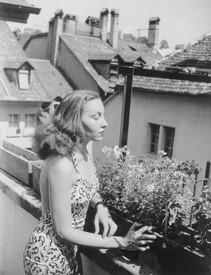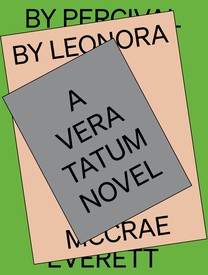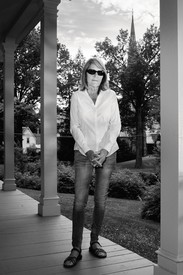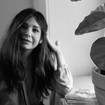
The poet and essayist Anne Boyer is the inaugural winner of the Cy Twombly Award for Poetry, from the Foundation for Contemporary Arts, and a 2018 Whiting Award winner. Her latest book, The Undying (2019), won the 2020 Pulitzer Prize in General Nonfiction.
We stared a lot at uncrossed thresholds and stared a lot at screens. We watched aerial footage of a hamburger wrapper floating on the breeze past a closed nail salon. We saw a pug dressed in a Tyvek suit and booties leading its human companion, also in Tyvek suit and booties, down an empty boulevard. We saw grandfathers dressed in full-body rainsuits with bra cups strapped over their mouths. Sometimes a standing man would fall to the ground—first in China, then again in Iran, then again in Italy. We saw piles of body bags in vestibules. To be spotted outdoors at all was soon to be thought of as criminal.
Interiors suffered: HVAC systems grew exhausted from our sensitivities, floorboards acquired new scratches, the filaments burned out of light bulbs, plumbing grew clogged from our waste. We wore the enamel off sinks with all our cleaning. Every wall, out of weariness at its human inhabitants, grew thinner. If a newly unemployed assistant manager two doors over couldn’t stop coughing, the walls not only let this sound through but seemed to issue it an invitation. Ambulance sirens, phone calls to insurance companies, domestic disputes over finances, and sex grunts passed freely between houses and rooms, like the smoke from vanilla-scented candles and cherry-scented vapes.
It wasn’t only that the walls became thinner; they also started closing in. Where we could once move about freely, we were now met with multiplying obstacles: a stepladder, an ottoman, piles of bills, small children, roommates. We were aware that the walls of the now-empty opera houses and museums and courthouses were expanding in proportion to the constriction of ours. Basketball arenas mocked us with their calm emptiness. Those in prisons, warehouses, cruise ships, and meatpacking plants watched their walls close in faster than the rest of us, so much so that those within them sometimes revolted, grew ill, or died. We saw nursing home patients press handwritten signs to their windows. We watched videos of incarcerated men burning files in a ransacked office, shouting about health care, the contraband cell phone camera momentarily resting its sight on a barred window, and then past it to a white cloud in a blue sky.
Office towers, schools, and airports became the loneliest of all buildings. Even shopping malls mourned. What had once been sites of dizzying, bustling circulation became as empty as cathedrals at dawn. Elevators ceased to rise. Fluorescent lights rarely had the opportunity to flicker. Biometric scanners had nothing to measure but dust. Bats hung from the eaves of parking garages. Swallows inhabited the dim hulls of financial districts. Rats missed the ease with which they once found dinner. Termites now nibbled, untroubled, at once important beams of wood.
We became obsessed with the freedom of the other animals. Dolphins cartwheeled in the Bosporus. Jackals overran a park in Tel Aviv. Pumas lounged on the street corners of Santiago. Flamingos blanketed Mumbai. Lions sunbathed on highways. Coyotes crossed the San Francisco Bay Bridge. In Argentina, sea lions nudged open the doors of closed surf shops. Everywhere there were monkeys and temples, monkeys ransacked temples. If we had been told that vultures held mass in the Sistine Chapel, or that polar bears were now legislating at Westminster, we might have agreed it was true. We believed that doves, honeybees, ocelots, salamanders, sharks, badgers, catfish, and possums could now express the desires they had hidden from us for centuries. Grasshoppers might eat all the gold in Fort Knox. Beavers could build neon-lit dams in Las Vegas fountains, and perhaps did.
Except for our delivery drivers, who had become like pigeons, and our politicians, who had remained vipers, many of us had become like moles. Moles, on the other hand, had become like eagles: expansive and undeterred, expropriating golf courses and suburban lawns. Now molelike inside our shrinking rooms, caught up in the sounds of our increasingly desperate neighbors, fixating on our unopened doors, not one of us thought to break her computer screen, crush his phone’s sim card, or throw their hard drive out the high-rise windows. Instead we worked harder to flatten life so that it might fit into code. Space and time fainted from the shock. Live streams and Web meetings stampeded through satellite waves and buried cables. We had already, for years, masturbated to screens; now we had our dying relatives, alone in the ICUs, say their final goodbyes to them. Our infrastructure stuttered in the onrush of all of this abstracting. It tripped, barely caught up, tripped again. The cloud spread out over all of heaven, now irrevocably imbued with idolic intensifications. Its earthly twin—the data centers erected in ocean waters or in faraway fields—grew hot with human need.
The cloud became the cradle for our fears: bioweapons, toilet paper shortages, economic collapse, tech billionaires implanting microchips in an unwitting population, and martial law. We woke each morning to enter all we were into the cloud’s capacious being. Our love, work, school, shopping, sex, law, medicine, and death all now resided there. The cloud held how we humiliated and punished each other, too, both for entertainment and for profit. It held how we felt angry and also how we felt ashamed. There were not enough metaphors for the cloud and all it was to us, so it went by many names, including The Skewed Account, The Infinite Repository, The Final International Bank of Vindictive Memory™, Nimrod’s Reversal, The No-Mercy Engine, Bad Collectivity, and The Omega and the Omega. If we left our homes, we did so with our cameras ready, hoping to gather up and donate the last fugitive instances of our embodiment. We had taken all that was once us and now, seeking a new form, pressed ourselves flat, offered this up to the cloud, which then rendered it into math and glass and light. The screens on which we did this became the altars of the new gods, ones that we were only beginning, in these early days, to name.
First, however, the old gods had to fall. When we finally opened our doors again, it was to gather, enraged, around pedestals. The old harms and the new had joined together, and for this reason, everything monumental needed to fall. Statues came down wherever they stood: slavers, presidents, prime ministers, war lords. Men with guns gathered to protect them. The statues continued to fall. So many statues fell that some of us suspected the gathering crowds were against the form of “statue,” the form of “pedestal” itself. Any rendering of a man standing in a posture of the Enlightenment, strong faced and unsmiling over once public places, was a form of the old and unworkable world that had to go. The president of the United States stood in front of a mountain carved with strong-faced and unsmiling men of the Enlightenment, promised he would throw all iconoclasts in federal prison and build a grand park full of statues. The statues continued to fall. They fell like the angels at the hands of Cromwell’s men, fell like the ancient Buddhas that fell to isil. That is, they fell the way icons were supposed to fall, in that this is what they were made for, but this time they fell as three-dimensional life itself also fell and wouldn’t stop falling. Between the monument and the moving image, it was clear to us which had won.
This is when the first of the new religions crawled into the open. Its sacraments involved reposting memes and defying the algorithms meant to defeat it. Its hashtags were prayers—“Where we go one, we go all,” and “God will win.” Its initiates circulated screenshots of expensively priced office furniture that they imagined hid enslaved children—e-commerce sacrifices to Moloch, to be sold to blood-drinking celebrities or art-world satanists who served their flesh at dinner parties. The converts pledged by the thousands, then the tens of thousands, to become soldiers in a holy war, swearing to “trust the plan,” piecing together scripture from what they called the “breadcrumbs” left by an anonymous Internet prophet on a pornographic image board. Its adherents began to gather on the streets, yelling about crusades and cheese pizzas. This new belief—syncretic, opportunist, diffuse—galloped across borders, recruiting all who were unhappy in those days, and so many of us were unhappy that it was a surprise we did not all fall under its spell. It was, as many things seemed to become suddenly and without warning, Manichaean. The president of the United States was the prince of light. Tom Hanks and Oprah were the demonic forces that had been, for thousands of years, attempting to devour the earth.
There were twin hurricanes and summer snowstorms. Baghdad reached a record high of 125 degrees. Locusts swarmed the Horn of Africa. A million people died of the plague. There was no public mourning. There were no Elton John songs or saccharine or melancholy televised extravaganzas of grief. No one decorated with black crepe ribbons the refrigerator trucks full of cadavers. No one piled up teddy bears and bouquets of flowers. There was no increase in the sales of wreaths, not even a website with a gif of a flickering candle looped in endless remembrance of those we’d lost. There was no common grief, just mistrust and fear and celebratory jeering when a tyrant fell ill, but none of the tyrants ever bothered to join the dead, who all now stood aghast around the living. The ghosts were now too disheartened to haunt.
By the time the West Coast of the United States was on fire and the sky had turned orange all the way to Great Britain, people had already begun to kill each other for new reasons, ones we had not yet invented before the plague had come. Perhaps it was a miasma moving across the land that caused poor judgment, like whatever had inspired those with boats to line them up for a parade, biggest to smallest, so that the smallest boats were sunk in the subsequent wake. There were, at times, actual flagellants. The rich got so much richer they ceased to be in the grasp of math. Rumors spread of the black-clad enemies of all, invading small towns, defacing gravestones, setting forests on fire. Men in white trucks gathered in militias to chase down what was never there. Hundreds of elephants in Botswana fell dead of no known cause. Every fiction lost its purpose. A star two million times brighter than the sun disappeared from the sky.
Read “The Iconoclasts: Part 1,” “The Iconoclasts: Part 2,” and “The Iconoclasts: Part 3”
